Science Update
The science team is working on our Day 3 Incubation sampling and collecting more water samples at a station in the Drake PassageStrait, connecting the Atlantic and Pacific oceans between Tierra del Fuego and the South Shetland Islands. Located about 100 mi (160 km) north of the Antarctic Peninsula, it is 600 mi (1,000 km) wide.. There is weather on the way, so we will be leaving this area soon to head towards land. We hope to start sampling in stations closer to the Western Antarctic Peninsula in the next day or two. You can see our location by clicking on the map link at the top of the journal.
TGIWF - Thank Goodness It's Wildlife Friday!
When we are not sampling seawater, running nutrients tests or filtering water (among other things) there is time to watch for wildlife and experience the beauty of this area. The descriptions and images below are based on some of the better photographs thus far in the trip. There are a number of other animals that make the sightings list, but may or may not have photo documentation (yet). They include:
- Sooty shearwater (Puffinus griseus)
- Antarctic shag (Phalacroccorax bransfieldensis)
- Wandering albatross (Diomedea exulans)
- Cape petrel (Daption capense)
- Leopard seal (Hydrurga leptonyx)
- Antarctic minke whale (Balaenoptera bonaerensis)
As we continue to move closer to the Western Antarctic Peninsula, I expect the wildlife sightings to increase. I'll be sure to update the list and post another journal when I have more pictures. For now...enjoy!
Adelie Penguins (Pygoscelis adeliae)
I was on the bridge (approximately 54 feet off the water) when I heard the captain mention something about penguins. I looked ahead and saw a few little black dots atop a piece of sea ice. They were still far away from the ship, but we were making our way closer to the little penguins. I was able to head out on the walkway that circles the bridge in order to snap a few pictures of these Adelie penguins before all of them retreated to the water. We passed two other small groups that morning.
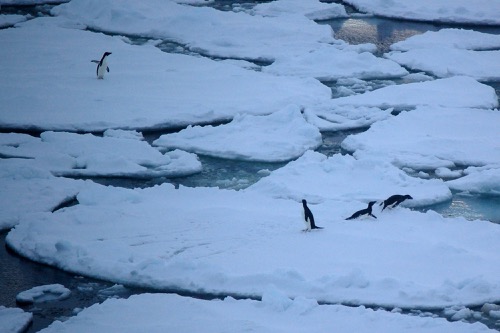
Adelie penguins are considered a medium-sized penguin, reaching lengths of about 70cm/28inches. These penguins have a short breeding cycle and time their breeding with the warming on the seasons and the availability of food. The coloration pattern is similar to the chinstrap penguin (Pygoscelis antarcticus), but Adelie's do not have the black line (or chinstrap) on their chin.
Antarctic petrel (Thalassoica antarctica)
These birds are often confused with the Cape petrel (Daption capense) introduced in another journal. The Antarctic petrel is usually seen in association with icebergs and pack ice. These birds nest in cliffs to stay well protected from predatory birds like skuas and gulls. These birds can reach lengths of 40-46cm/16-18inches with a windspan of 100-110cm/39-43inches.
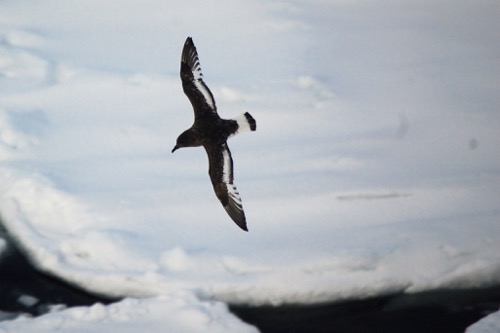
Snow petrel (Pagodroma nivea)
Snow petrels are a slightly smaller in size than the Antarctic petrel with a length of 35-40cm/14-16inches and a wingspan of 75-95cm/30-37inches. These birds are often referred to as the "Angel of Antarctica" because of their beautiful while coloration. These birds frequent the ice-pack areas and are usually seen around icebergs and glaciers. The snow petrel has the most southerly breeding distribution of any bird, with sightings as far south as the South Pole.
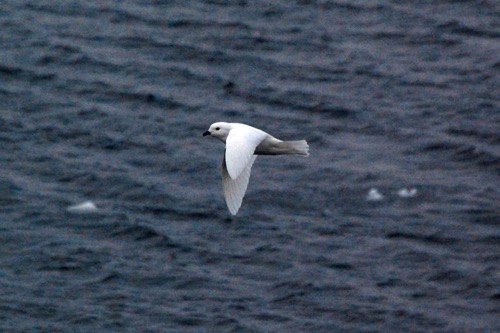
Antarctic fur seal (Arctocephalus gazella)
Besides the many seabirds that pass by the ship throughout the day, the most common sighting on the floating ice is the Antarctic fur seal. It is easy to identify these seals from a distance because as soon as they sit up, you can see the distinct long flippers and the hind flippers that tuck under the body. The fur seals often vocalize (or bark) at each other, or even at the RVIB Palmer as it moves by. These fur seals have a insulating blubber layer and two layers of hair (soft hair and guard hair that protects their skin from the cold water) to keep them warm in these icy waters.
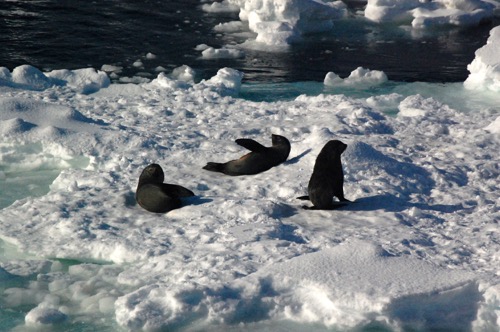
Weddell Seal (Leptonychotes weddellii)
These seals will make you smile with their round bodies and awkward gait. The Weddell seals may have many different markings with colorations from light to dark. The Weddell seal generally reaches 2.5-3.5m/7-8feet in length and can weigh a few hundred pounds (as is evident in the photos). Weddell seals are deep divers with maximum depths recorded at 750m.
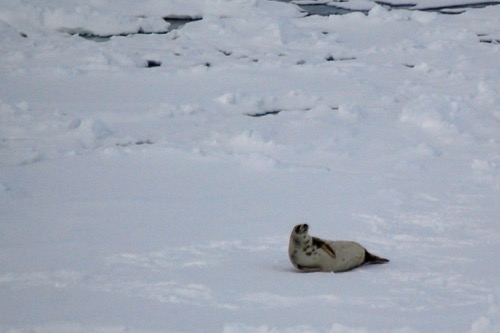
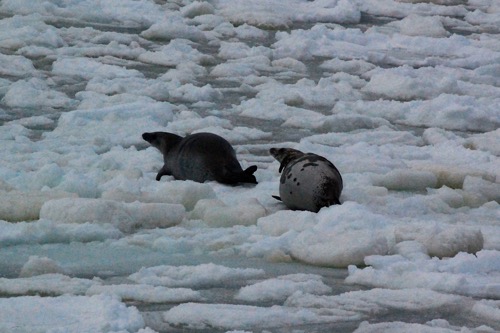


Comments